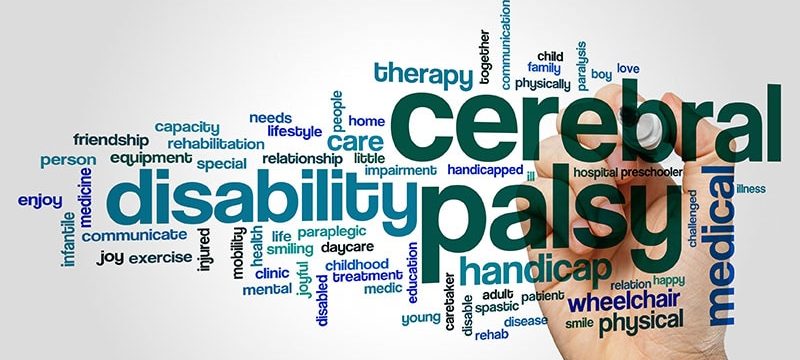CINCINNATI – Dystonia is a frequent complication seen in cerebral palsy, but it often goes undiagnosed. Using a unique video analysis, researchers have identified some movement features that have the potential to simplify diagnosis.
“[We have] previously demonstrated that by the age of 5 years, only 30% of children seen in a clinical setting have had their predominant motor phenotype identified, including dystonia. This helps demonstrate a broad diagnostic gap and the need for novel solutions,” said Laura Gilbert, DO, during her presentation of the results at the 2022 annual meeting of the Child Neurology Society.
Diagnosis of dystonia is challenging because of its clinical variability, and diagnostic tools often require a trained physician, which limits access to diagnoses. Expert clinician consensus therefore remains the gold standard for diagnosis of dystonia.
Another clinical need is that specific features of dystonia have not been well described in the upper extremities, and the research suggests there could be differences in brain injuries contributing to dystonia in the two domains.
The researchers set out to discover expert-identified features of patient videos that could be used to allow nonexperts to make a diagnosis of dystonia.
The researchers analyzed 26 videos with upper extremity exam maneuvers performed on children with periventricular leukomalacia at St. Louis Children’s Hospital Cerebral Palsy Center from 2005 to 2018. Among the study cohort, 65% of patients were male, 77% were White, and 11% were Black; 24% of patients were Gross Motor Function Classification Scale I, 24% were GMFCS II, 24% were GMFCS III, 16% were GMFCS IV, and 12% were GMFCS V. A total of 12% of patients were older than 20, 11% were aged 15-20, 38% were aged 10-15, 31% were aged 5-10, and 8% were age 5 or younger.
Video Clues Aid Diagnosis
Three pediatric movement disorder specialists independently reviewed each video and assessed severity of dystonia. They then met over Zoom to reach a diagnostic consensus for each case.
The research team performed a content analysis of the experts’ discussions and identified specific statement fragments. The frequency of these fragments was then linked to severity of dystonia.
A total of 45% of the statement fragments referenced movement codes, which in turn comprised five content areas: 33% referenced a body part, 24% focused on laterality, 22% described movement features, 18% an action, and 3% described exam maneuvers. Examples included shoulder as a body part, flexion as an action descriptor, brisk as a movement feature, unilateral, and finger-nose-finger for exam maneuver.
With increasing dystonia severity, the shoulder was more often cited and hand was cited less often. Mirror movements, defined as involuntary, contralateral movements that are similar to the voluntary action, occurred more often in patients with no dystonia or only mild dystonia. Variability of movement over time, which is a distinguishing feature found in lower extremities, was not significantly associated with dystonia severity.
Within the category of exam maneuver, hand opening and closing was the most commonly cited, and it was cited more frequently among individuals with mild dystonia (70% vs. about 10% for both no dystonia and moderate to severe dystonia; P < .005).
“So how can we adopt this clinically? First, we can add in a very brief exam maneuver of hand opening and closing that can help assess for mild dystonia. Shoulder involvement may suggest more severe dystonia, and we must recognize the dystonia features seem to differ by body region and the triggering task. Overall, to help improve dystonia diagnosis, we must continue to work towards understanding these salient features to fully grasp the breadth of dystonia manifestations in people with [cerebral palsy],” said Gilbert, who is a pediatric movements disorder fellow at Washington University in St. Louis.
Key Features Help Determine Dystonia Severity
The study is particularly interesting for its different findings in upper extremities versus lower extremities, according to Keith Coffman, MD, who comoderated the session where the study was presented. “That same group showed that there are very clear differences in lower-extremity function, but when they looked at upper extremity, there really weren’t robust differences. What it may show is that the features of cerebral palsy regarding dystonia may be very dependent on what type of injury you have to your brain. Because when you think about where the motor fibers that provide leg function, they live along the medial walls of the brain right along the midline, whereas the representation of the hand and arm are more out on the lateral side of the brain. So it may be that those regional anatomy differences and where the injury occurred could be at the baseline of why they had such differences in motor function,” said Coffman, who is a professor of pediatrics at University of Missouri–Kansas City and director of the movement disorders program at Children’s Mercy Hospital, also in Kansas City, Mo.
He suggested that the researchers might also do kinematic analysis of the videos to make predictions using quantitative differences in movement.
The research has the potential to improve dystonia diagnosis, according to comoderator Marc Patterson, MD, professor of neurology, pediatrics, and medical genetics at Mayo Clinic in Rochester, Minn. “I think they really pointed to some key features that can help clinicians distinguish [dystonia severity]. Something like the speed of opening and closing the hands [is a] fairly simple thing. That was to me the chief value of that study,” Patterson said.
Gilbert reported no relevant disclosures.
This article originally appeared on MDedge.com, part of the Medscape Professional Network.
Source: Read Full Article
